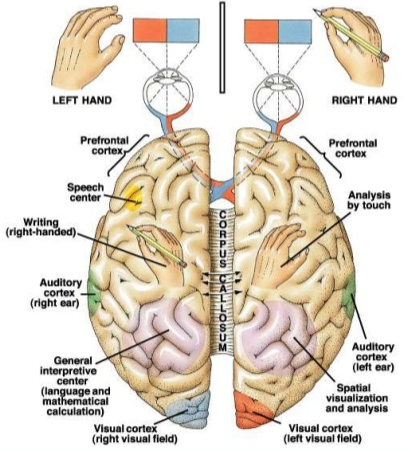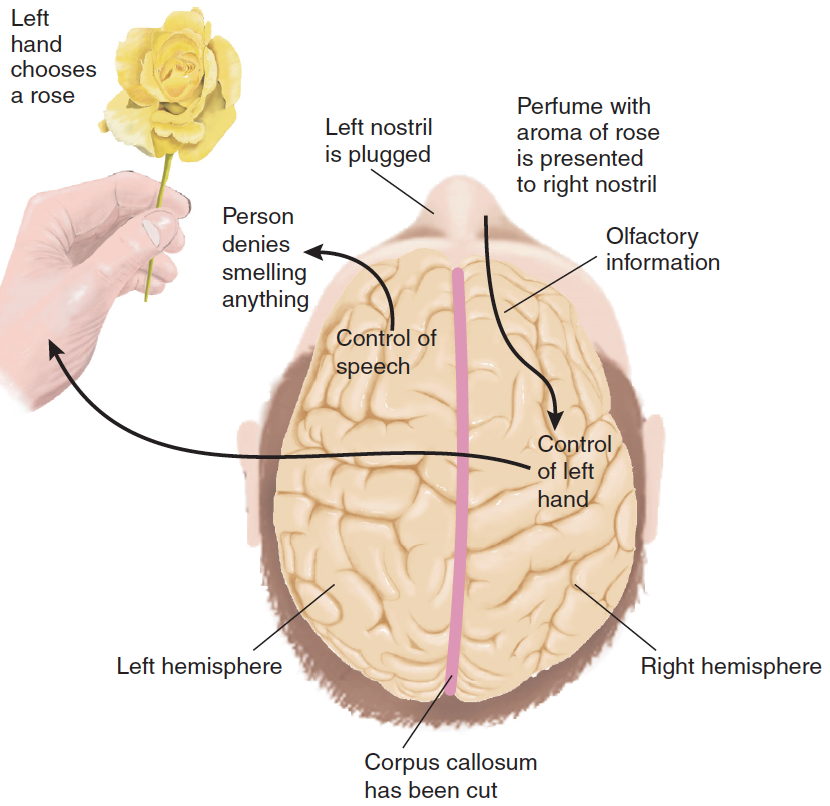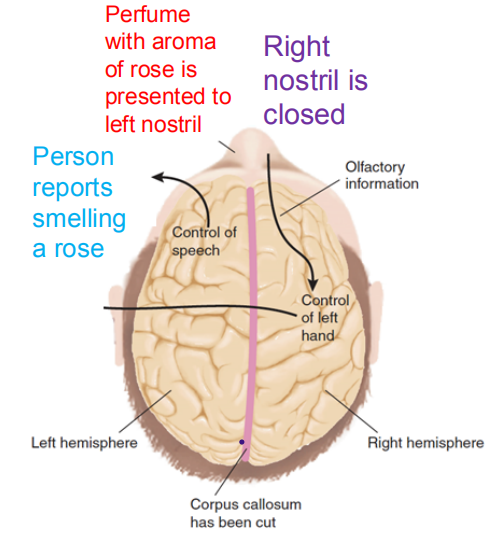L1 Introduction
一、Understanding Human Consciousness
The Split-Brain Operation
The corpus callosum(胼胝体) is a large bundle of nerve fibers that connect corresponding parts of one side of the brain with those of the other.
- Both sides of the brain then engage in wild activity and stimulate each other, causing a generalized epileptic seizure(癫痫发作).
- Neurosurgeons discovered that cutting the corpus callosum (the split-brain operation) greatly reduced the frequency of the epileptic seizures.
1. The two hemispheres

The part of the brain that receives sensory information from the opposite sides of the body.
The hemispheres also control movements of the opposite sides.
- One exception to the crossed representation of sensory information is the olfactory system(嗅觉系统).

The corpus callosum enables the two hemispheres to share information so that each side knows what the other side is perceiving and doing.
2. Smelling with a Split Brain
When a person sniffs a flower through the left nostril, only the left brain receives a sensation of the odor.

Thus, if the right nostril of a patient with a split brain is closed, leaving only the left nostril open, the patient will be able to tell us what the odors are (Gordon and Sperry, 1969)

But, in fact, the right brain has perceived the odor and can identify it.
- To show that this is so, we ask the patient to smell an odor with the right nostril and then reach for some objects that are hidden from view by a partition
- If asked to use the left hand, controlled by the hemisphere that detected the smell, the patient will select the object that corresponds to the odor—a plastic flower for a floral odor, a toy fish for a fishy odor, a model tree for the odor of pine, and so forth.
- But if asked to use the right hand, the patient fails the test because the right hand is connected to the left hemisphere, which did not smell the odor
3. Other examples with split-brain patients

Patients may find themselves putting down a book held in the left hand, even if they have been reading it with great interest. This conflict occurs because the right hemisphere, which controls the left hand, cannot read and therefore finds the book boring
- At other times, these patients surprise themselves by making obscene gestures (with the left hand) when they do not intend to.
A psychologist once reported that a man with a split brain had attempted to beat his wife with one hand and protect her with the other.
二、The Goals of Research
Scientific explanation takes two forms:
- Reduction(还原): explain a phenomenon in terms of more basic elements
- ⽤简单的术语揭示复杂的现象
- Generalization(概化):deduce general laws from specific events
- 从特定的事例验演绎出⼀般的规律
三、Natural Selection and Evolution
- Charles Darwin(达尔⽂)
- Darwin formulated the principles of natural selection and evolution, which revolutionized biology.
- Functionalism (功能主义)
- Characteristics of organisms perform useful functions (有机体的特征都有功能意义)
- Inheritance of Traits
- Mother mice construct nests, which keep their offspring warm and out of harm’s way. Obviously, the behavior itself is not inherited—how can it be? What is inherited is a brain that causes the behavior to occur.
- Natural selection
- Heritable variation among individual exists
- If an individual has characteristics that result in greater reproductive success, some of an individual’s offspring will inherit the characteristics and will themselves reproduce more
- The characteristics will become more prevalent in the population
- If breeders could select for traits (artificial selection), perhaps natural selection could be responsible for the development of species
- Evolution of Large Brains
